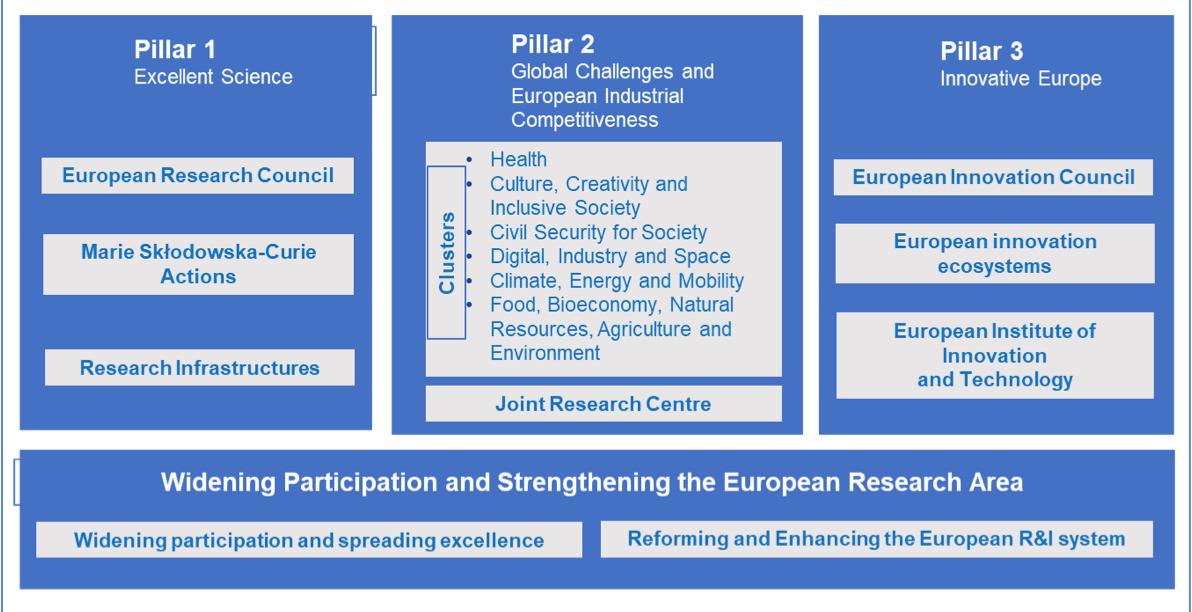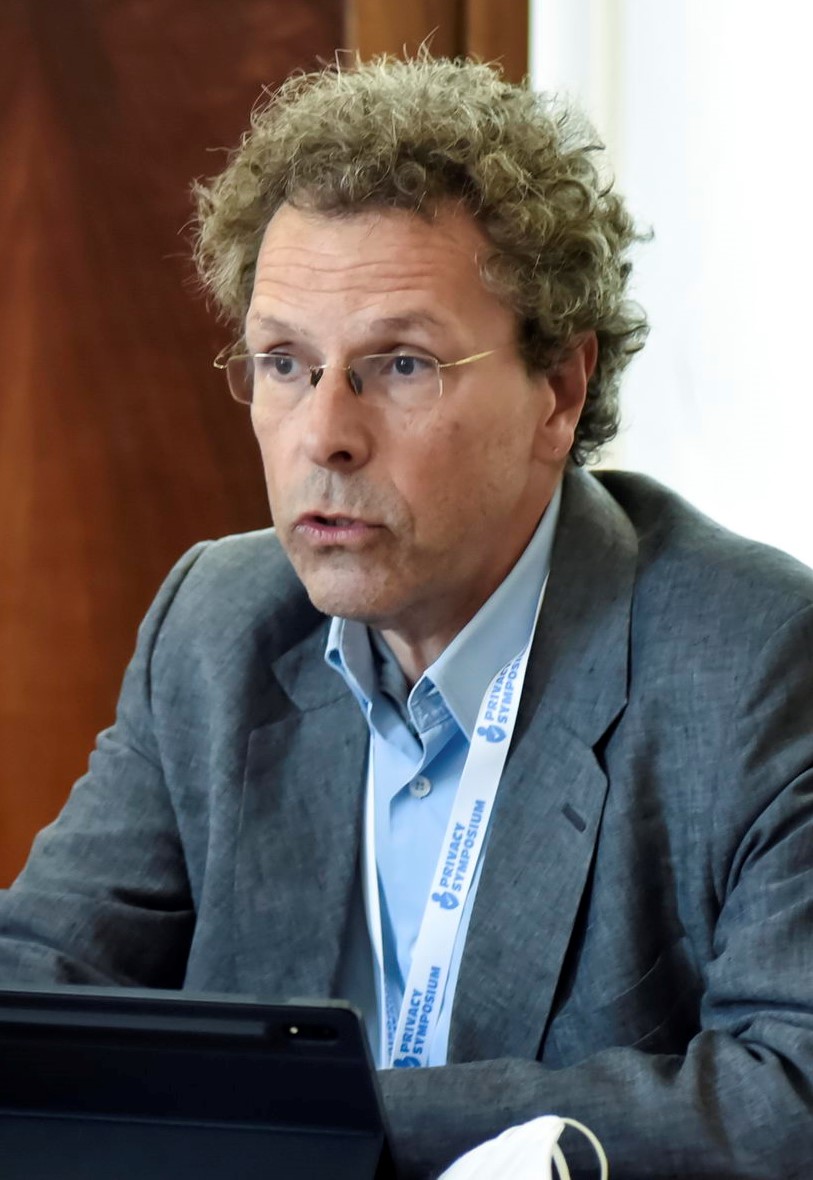Navigating the nexus of Policy, Digital Technologies, and Futures (S1/E15)
S1/E15: Bonus Episode # 2 – The EU Ninth Framework Programme for Research and Innovation: Horizon Europe
This second bonus episode intends to provide a reading of the Horizon Europe (Horizon) programme from a researcher’s perspective. Indeed, as all official texts about Horizon are composed of fully cryptic jargon and acronyms, here I try to introduce its main concepts without much of those, leaving an explanatory part on jargon to the end. As a consequence, the information provided here may not be always formally correct. For fully and formally correct descriptions of Horizon, good sources are the European Commission page of Horizon Europe, while the ultimate source is the European legislation that established the programme. (Oh yes! Horizon Europe is a secondary legislation of the EU, just like any of the Acts discussed in previous episodes.)
What is Horizon Europe?
Formally speaking, Horizon Europe is the Regulation (EU) 2021/695 of the European Parliament and of the Council of 28 April 2021 establishing Horizon Europe – the Framework Programme for Research and Innovation, laying down its rules for participation and dissemination, and repealing Regulations (EU) No 1290/2013 and (EU) No 1291/2013.
But Horizon Europe is better known as the ninth of a series of framework programmes that fund research across the European Union (EU) and some other countries, known under different names, like Associated Countries and others. Think of your preferred national research funding agency and its funds opportunities. In the case of Horizon, the funds are disbursed by the European Commission (EC) itself, or by a number of joint undertakings between the Commission, Member States, and Industrial partners (see Partnerships further down), or yet by a number of European agencies, depending on the part of the programme to which the project belongs. Don’t get inhibited by the many acronyms of such agencies, like REA, ERCEA, HADEA, etc. (‘EA’ at the end stands for “Executive Agency”), as these are just administrative bodies executing the budget. And what a budget it is! Almost 100 billion Euros for funding research and innovation during the seven years of its duration (2021-2027).
Since Horizon is a EU law, it presents Implementing Acts, which are non-legislative acts laying down detailed rules allowing the uniform implementation of legally binding Union acts. Implementing acts are usually adopted by the EC under the control of committees consisting of Member States' representatives. And here, I’m sure you’re going to learn a new Commission-speak term: Comitology.
Horizon Europe Comitology
EU laws sometimes authorise the European Commission to adopt implementing acts, which set conditions that ensure a given law is applied uniformly. Comitology refers to a set of procedures, including meetings of representative committees, that give EU countries a say in such implementing acts.
Comitology applies when the EC has been granted implementing powers in the text of a law. The same law also stipulates that the EC is to be assisted by a committee when defining the measures contained in the resulting implementing act.
In the case of Horizon, its Comitology committees (in the plural) are set up by the Council. They include one representative from every EU country and are chaired by an EC official. Horizon committees meet several times a year in EC premises (usually in Brussels). Prior to each meeting, EC departments submit draft implementing acts to the responsible committees for an opinion.
Ok, you have the right to ask aloud why on Earth I’m telling you this incomprehensible blabber. The answer is that this comitology is a very important part of the definition of the priorities and of the awardees of the programme, being the place where all decisions concerning the implementation of the programme are made, or at least rubber-stamped. And yet, it’s not well known. I’ll refer back to it later in the text. But first, let’s move to the researcher’s perspective.
What are the places of entry for researchers?
Horizon has several sub-programmes and each of them is designed to fund a specific type of research, according to their respective Work Programmes (more on this, further below). Here are the main ones, listed by the type of research you may wish to develop at the European level.
- You want to get training through mobility, as a Post-Doc or as a researcher in a sabbatical, for instance. Then the Marie Sklodowska-Curie Actions (MSCA) instrument Postdoctoral Fellowships is for you.
- You want to do research at the highest excellence level on a subject of your own choice, leading your own team of PhD students and Post-Docs. Then you should look at the European Research Council (ERC) and its Grants.
- You want to lead or to participate in a collaborative European project that increases capacity through training by research. This can be a project that trains a cohort of PhD students on a multidisciplinary subject or another one that exchanges staff between research institutions and industry. Then, again, the MSCA instruments Doctoral Networks (DN) or Staff Exchanges (SE) are for you, because MSCA is the part of Horizon that deals with all aspects of training through research and mobility.
- You want to lead or to participate in a collaborative project that advances knowledge in a specific area. Then you have two main possibilities:
- You are a researcher who wants to address a research problem so ambitious that it cannot be dealt with by you and your team alone. Then you may try the ERC Synergy Grants, where proposals may be in any research field and are evaluated on the sole criterion of scientific excellence.
- You see your research as capable of being part of the solution of a societal or industrial question. Then Horizon proposes two main types of instruments to fund this kind of projects, namely Research and Innovation Actions (RIA) and Innovation Actions (IA). Some restrictions apply, though, because the areas of societal or industrial relevance are pre-selected in the programme.
- You want to lead or to participate in a high-risk/high-gain technology-driven interdisciplinary collaborative project, whose outcomes could result in business opportunities, that lay sometime in future (long or short) yet you know how to preliminarily describe them now. Then you should look at the European Innovation Council (EIC) instruments, mainly Pathfinder and Transition.
- You want to lead or to participate in a project that doesn’t fund much of your research, but allows you to get together with researchers from different areas and countries to discuss a subject of your choice. Then you should try and propose/join a European Cooperation in Science and Technology (COST) Action.
- You want to lead or participate in a project that increases capacity in the area of research infrastructures. Then there is a part of Horizon that deals exactly with that and uses instruments like the RIA described above, but also Coordination and Support Actions (CSA), meant to, well, coordinate and support the deployment of such infrastructures.
[Allow me to brag a little bit here, about my home organisation’s track-record in projects won at the EU level. As it happens, the French CNRS (Centre National de la Recherche Scientifique) was the first beneficiary of funds from Horizon 2020 (the predecessor of Horizon Europe, which ran from 2014 until 2020) and, as it stands, it’s the first beneficiary of Horizon Europe so far! We’re clearly very proud of it, but we think we can do even better. That’s why in 2021 I had the privilege to co-write the CNRS’ European strategy (Stratégie européenne du CNRS), that’s guiding my organisation towards more and more relevant projects under Horizon Europe and its successor programmes. I, for one, am leading my lab in two very exciting interdisciplinary such projects. Hear! Hear!]
Work Programmes
Work Programmes are the official documents describing the call for proposals for each of the sub-programmes, along with the available budget for each call. They are usually published every two years, which is clearly an issue in a seven-year-long programme. They are where you’ll find all the information you need in order to start your proposal. And guess what? They’re Implementing Acts of the Horizon Europe regulation. Decided by the comitology! As a matter of fact, there are such committees for each of the main sub-programmes in Pillars 1 and 3, and for each of the Clusters in Pillar 2 (more on these pillars, below). They are called Programme Committees.
Information about the Work Programmes can be found at the European Commission's Horizon Europe work programmes page, and all the calls for proposals can be found at the European Commission's funding portal.
A little of jargon
Now that you know more or less where to look for the funding opportunities that most suit your current research goals, let me tell you how to map the above perspective into the documents you’ll find about Horizon.
Horizon Europe is presented as three pillars and one transversal component, as follows.

In the first pillar, the legislation that established Horizon put the ERC, MSCA, and the Research Infrastructures, and called the pillar “Excellent Science”. This of course begs the question whether the other pillars are for ‘mediocre science’. The answer is not. They all focus on excellence. It’s just that the other pillars are also driven by other considerations, like industrial competitiveness or innovation.
It’s in the second pillar that we find the RIA/IA for boosting key technologies and solutions underpinning EU policies & Sustainable Development Goals on a few selected areas, called ‘Clusters’. There you’ll also find something called Joint Research Centre (JRC). Don’t bother. The JRC is just a department of the European Commission. It is not truly a sub-programme but appears in this pillar because the JRC is cleverly funded through Horizon.
The third pillar is the one driven by “Innovation”. You’ll find the EIC there.
The COST Actions mentioned above belong in the “Widening” part of the transversal component.
Lastly, but not least, Horizon has also the notion of Partnerships, which are an integral part of the programme. They help to design, and/or implement the execution of, the Work Programmes.
Partnerships
The "European Partnerships" are an integral part of Horizon and bring together players from the economic world and the academic world, along with the European Commission, in order to produce strategic research and innovation agendas (SRIA) in specific areas of industrial and societal relevance. Such SRIAs become an essential tool for the European Commission in the preparation of Horizon Europe's Work Programmes for the years to come, and thus of future calls for projects. What is more, JU (Joint Undertaking) type partnerships (see below) are completely independent with regards to the execution of their budget, which may include ring-fencing part of it for members of the partnership exclusively, for example.
There are three types of European Partnerships:
- Institutionalised European Partnerships: Legislatively established partnerships between the EU and member states and/or industry. These partnerships launch their own calls for proposals which are – just like “regular” Horizon Europe calls – published on the Funding & Tender Opportunities Portal. These are called Joint Undertakings.
- Co-programmed European Partnerships: The partners establish a Strategic Research and Innovation Agenda (SRIA), that provide input for drafting the topics to be funded by the respective pre-selected area of Horizon Europe.
- Co-funded European Partnerships: Partners are national funding bodies (e.g. grant agencies or ministries) that decide to jointly support international research projects in a certain area (e.g. nanomaterials or biodiversity).
We know that digital technologies permeate most areas in research nowadays. But if we think about research in digital sciences and technologies more specifically, then there are five partnerships of Horizon that spring to attention. They are the following:
- KDT: The Key Digital Technologies JU is a EU-driven, public-private partnership, funding innovation in electronic components and systems. It funds projects for assuring world-class expertise in these key enabling technologies, essential for Europe's competitive leadership in the era of the digital economy. Be alert, because KDT will become CHIPS, as soon as the eponym EU Act is approved, probably in the Fall 2023.
- EuroHPC: The European High-Performance Computing JU is a joint initiative between the EU, European countries, and private partners to develop a world-class Supercomputing ecosystem in Europe.
- ADR: The AI, Data and Robotics partnership is a co-programmed European Partnership aiming to secure European’s sovereignty over AI, data, and robotics technologies and know-how.
- SNS: The European Smart Networks and Services JU aims to ensure industrial leadership for Europe in 5G and 6G, by boosting 5G deployment in Europe and fostering Europe’s technology sovereignty in 6G.
- Virtual Worlds: In July 2023, the European Commission presented its new strategy for the Web 4.0 and virtual worlds that included the proposal of a candidate Partnership on Virtual Worlds, in order to “foster excellence in research and develop and industrial and technological roadmap for virtual worlds.” The EC also seeks to boost innovation by allowing for the testing of new digital creation tools, e.g. through regulatory sandboxes.
Technology Maturity
One last word on an important jargon. I guess that the vast majority of our readers will know about it, but I prefer to include it here for the sake of completeness.
Above I mentioned ‘technology maturity’. Horizon Europe is very specific about that and call it Technology Readiness Level, known as TRL, a term that was first coined by NASA. How a term used in such a high-end engineering enterprise ended-up guiding the allocation of research funds in the EU is anybody’s guess.
Levels go from 1 to 9, depending on the distance the technology stemming from your research is from market deployment (9 is closest). The following definitions of TRLs are given by Horizon, recognising that there are important differences between technological fields:
- TRL1 - basic principles observed
- TRL2 - technology concept formulated
- TRL3 - experimental proof of concept
- TRL4 - technology validated in lab
- TRL5 - technology validated in relevant environment
- TRL6 - technology demonstrated in relevant environment
- TRL7 - system prototype demonstration in operational environment
- TRL8 - system complete and qualified
- TRL9 - actual system proven in operational environment
A rough correspondence can be established between Horizon Europe’s Pillars and expected TRLs, with lower TRLs usually pertaining to Pillar 1 and higher TRLs usually pertaining to Pillar 3, with Pillar 2 usually expecting mid TRLs. However, exceptions to this rule-of-thumb abound and one cannot establish a clear rule regarding expected TRLs by sub-programme. For example, the EIC, in Pillar 3, aims to fund projects both in low TRLs (EIC Pathfinder) and high TRLs (EIC Transition and EIC Accelerator).
And with this the two bonus episodes of this blog series come to an end. I hope they brought some new knowledge to you. If you need more information about any of the contents addressed in the 15 episodes, feel free to contact me directly.
Keep well!
[This blog series is inspired by research work that is or was partially supported by the European research projects CyberSec4Europe (H2020 GA 830929), LeADS (H2020 GA 956562), and DUCA (Horizon Europe GA 101086308), and the CNRS International Research Network EU-CHECK.]
CNRS - France
Digital Skippers Europe (DS-Europe)



Order Mdphp Freebase Mdpv 2fdck 4mmc ketamine protonitazene
Buy Research Chemicals Ephedrine hcl JWH-018 2fdck Apvp 3cmc Alprazolam Bromazepam Clonazolam Powder Protonitazene 2CB Mdphp Freebase Buy 5cladba 5cl online directly from @buy2cbonline.com/shop/
DH Research Labo is a leading manufacturer and supplier of research chemicals, primarily serving the scientific and research community. They offer a wide range of products, including laboratory equipment, chemicals, and reagents. @buy2cbonline.com
DH Research Labo is known for its commitment to quality and customer satisfaction. They prioritize rigorous quality control measures and adhere to strict safety standards to ensure the reliability and purity of their products.
Please note that research chemicals are intended for laboratory use only and should not be used for any other purpose
Threema: 3F3YDZMD
Telegram: @DHlabo
WhatsApp: +44 7507412275
Buy 5cladba 5cl online | Order 5cladba 5cl Online in Australia - https://buy2cbonline.com/product/buy-5cladba-safely-online/
Buy Mdphp Freebase online | Order Mdphp Freebase online https://buy2cbonline.com/product/order-monkey-dust-online-mdphp/
Buy Ketamine online | Order Ketamine online Australia
| ketamine Price per gram https://buy2cbonline.com/product/buy-ketamine-online/
Buy 5f-mdmb-2201 online - https://buy2cbonline.com/product/5f-mdmb-2201-for-sale-online/
Buy 2fdck online | Order 2fdck online AUS | 2fdck price per gram https://buy2cbonline.com/product/2-fdck-for-sale/
Buy JWH-018 online | Order JWH-018 online | JWH-018 Price per gram - https://buy2cbonline.com/product/buy-jwh-018-online/
Buy Cocaine online AUS | Order Cocaine online Aus US UK Canada | Cocaine price per gram Aus US UK Europe
https://buy2cbonline.com/product/buy-fish-scale-cocaine-online-fast/
Buy Ephedrine hcl online | Order Ephedrine hcl online, Ephedrine hcl price per gram AUS Europe US
https://buy2cbonline.com/product/buy-ephedrine-online-hcl-powder/
Buy Crystal Meth online | Order Crystal Meth online | Crystal Meth price per gram AUS US Europe | Buy Cheap Crystal Meth online aus europe us
https://buy2cbonline.com/product/buy-crystal-meth-online/
Buy Clonazolam online - https://buy2cbonline.com/product/buy-clonazolam-powder-online/
Buy 2C-I powder online - https://buy2cbonline.com/product/2c-i-powder-for-sale-online-safely/
Buy Alpha-pvp online | Order Apvp online | Apvp Price per gram AUS US Europe | Apvp price per kg in Australia
https://buy2cbonline.com/product/buy-a-pvp-online-usa/
Buy Bromazolam powder online
| Order Bromazolam online AUS
| Bromazolam Price per gram https://buy2cbonline.com/product/buy-bromazolam-powder-online/
Buy 2CB powder online | Order 2CB powder online | 2CB price per gram Australia - https://buy2cbonline.com/product/buy-2cb-powder-online/
Buy Mephedrone online | Buy 4mmc online | Buy 4mmc Mephedrone Meow online | 4mmc Mephedrone price per gram | Where to buy Mephedrone 4mmc online ?
https://buy2cbonline.com/product/buy-mephedrone-online-4mmc/
Buy Alprazolam powder online Order Alprazolam Powder Online | Alprazolam Powder Price per gram in Australia
Buy Cheap Alprazolam Powder Online https://buy2cbonline.com/product/alprazolam-powder/
Buy protonitazene online | Order Protonitazene Online https://buy2cbonline.com/product/hydrochloride-protonitazene-for-sale/
Buy fentanyl online - https://buy2cbonline.com/product/buy-fentanyl-powder-online/
Buy 3CMC crystal online Order 3CMC online
| 3CMC price per gram | Buy Cheap 3CMC online |https://buy2cbonline.com/product/buy-3cmc-crystal-3-cmc-online/
Buy Alprazolam Powder Online|Order Alprazolam Powder Online | Alprazolam Powder price per kg Apvp @buy2cbonline.com
Threema: 3F3YDZMD
Telegram: @DHlabo
WhatsApp: +44 7507412275